The Dujiangyan Irrigation System (都江堰), situated in the outskirts of Chengdu, Sichuan Province, China, stands as a monumental engineering achievement on the banks of the Minjiang River in the western Chengdu Plain. Comprising the main water-diversion structure known as the fish-mouth levee, Feisha Weir, and Baopingkou, along with a complex network of irrigation canals, diverse engineering structures, and reservoirs of varying sizes, this extensive system covers an area exceeding 13 hectares.
Functioning as the lifeline for irrigation in the central and western regions of the Sichuan Basin, Dujiangyan shoulders the responsibility of irrigating more than 750,000 hectares of farmland across seven cities and 40 counties. It also serves as a critical water source for key enterprises in Chengdu and fulfills urban water supply needs. Beyond its role in agriculture, Dujiangyan also offers services such as flood control, power generation, water transport, aquaculture, forestry, tourism, and environmental protection. As an integral part of Sichuan Province’s economic infrastructure, it is irreplaceable for the region’s national economic development.
Constructed during the later years of Qin Dynasty under the leadership of Li Bing, the governor of Shu County, around 276-251 BC, Dujiangyan is a testament to ancient engineering prowess. It is a unique and enduring water management system worldwide, distinguished by its characteristic of water diversion without the use of dams. Leveraging the natural topography of the region, Dujiangyan capitalizes on the northwest high and southeast low geographical conditions. By strategically separating the turbulent Minjiang River into outer and inner streams, the system ensures effective flood control in the outer river while diverting water for irrigation in the inner river, transforming the Chengdu Plain into the renowned “Land of Abundance” or “Tianfu Zhi Guo.”
Table of Contents
- Basic Information
- Location and Transportation
- Highlights of Dujiangyan Irrigation System
- Map and Recommended Routes
- Vlog about Dujiangyan
- Hydraulic Functions of Dujiangyan
- Useful Tips Based on Genuine Reviews
- Attractions Near Dujiangyan
Basic Information
| Website | https://www.djy517.com/ |
| Estimated Length of Tour | About 3 hours |
| Ticket Price | 80 RMB |
| Opening Hours | 8.30 – 18.00 |
| Telephone Number | 0086-028-96526 |
Location and Transportation
The Dujiangyan Irrigation System is located in Dujiangyan City, which is situated in the northwest of Sichuan Province in China. Dujiangyan is about 60 kilometers northwest of Chengdu, the capital city of Sichuan Province, and is easily accessible by car or public transportation.
Coach: There are coaches to Dujiangyan at all major bus stations, train stations, and airports in Chengdu. The price ranges from 14 to 30 RMB, and it generally takes over an hour to reach there.
Express railway: There are express trains commuting between Chengdu (Xipu Station 犀浦站) and Dujiangyan (Lidui Park Station 离堆公园站) throughout the day. The journey takes about 30 minutes and costs 10 RMB. You can book the ticket on www.12306.cn.
Highlights of Dujiangyan Irrigation System
Anlan Suspension Bridge
Lidui Park

Lidui Park is a beautiful and serene park located near the Dujiangyan Irrigation System. The park is famous for its fish watching activity, where visitors can observe fish swimming upstream against the current. The park also features several pavilions and gardens, including the Lidui Pavilion, which offers a panoramic view of the Min River and the Dujiangyan Irrigation System. In addition, there is a traditional teahouse in the park where visitors can relax and enjoy a cup of tea.
Erwang Temple

Erwang Temple is situated on the hillside on the right bank of the Min River, overlooking the Dujiangyan Irrigation System. Originally built as a memorial to the King of Shu, it was later renamed “Chongde Shrine” during the Qi Jianwu period (494–498 AD) to honor the father and son Li Bing, who were celebrated for their contributions to water management. After the Song Dynasty (960–1279 AD), Li Bing and his son were posthumously granted royal titles by the emperor, leading to the temple being known as “Erwang Temple” or “Temple of the Two Kings.”
The main hall of the temple houses statues of Li Bing and his son and features collections of famous quotes about water management and inscriptions by poets. The architectural complex is located on the eastern bank of the Dujiangyan irrigation system, covering approximately 50,000 square meters with the main buildings spanning about 10,000 square meters. The temple is divided into two parts: the eastern area, which is a garden, and the western area, which contains the main halls.
The entire temple complex is constructed in a traditional wooden frame structure and integrates with the natural geographical environment, utilizing the surrounding mountains. The architectural style does not emphasize central axis symmetry, reflecting a harmonious blend of temple and garden aesthetics.
Panda Valley

Panda Valley is a research and breeding center for giant pandas located in Dujiangyan. The center covers an area of over 13 hectares and is home to dozens of giant pandas. Visitors can observe the pandas in their natural habitat and learn about the center’s efforts to conserve and protect these endangered animals. The center also offers a chance to learn about the pandas’ behavior, habitat, and diet. Visitors can watch the pandas being fed and interact with them during feeding time.
Map and Recommended Routes
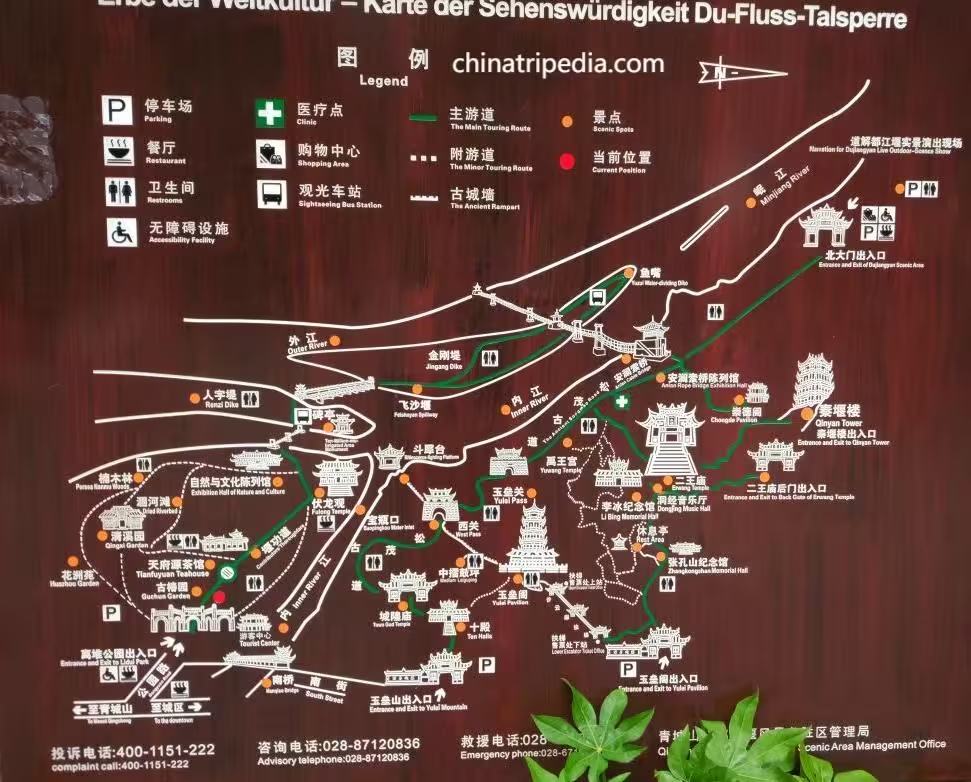
Classic Route
Enter the park through Gate 1 at Li Dui and exit through Gate 3 at Yulei Mountain, completing a full tour of the scenic area. This comprehensive route, which forms a large loop, takes approximately 3 hours and is ideal for an in-depth visit. It includes some mountainous paths, but the terrain is not too high, requiring a reasonable amount of time and physical stamina.
Easy Route (No Mountain Paths)
Enter the park through Gate 1 at Li Dui, visit the three major water conservation projects, and end at the Fish Mouth. Afterward, cross the Anlan Suspension Bridge and turn left, walking 300 meters to exit through Gate 7 at the North Gate. You can then take a taxi or the park’s direct shuttle back to Gate 1 at Li Dui. Alternatively, if the park is not crowded, you can take the sightseeing bus from Fish Mouth to return the same way (approximately 1.5 hours). This route is suitable for elderly visitors or those with infants.
Popular Route Online
Enter the park through Gate 6 at Qinyan Tower to view the entire landscape. This route involves visiting from top to bottom and exiting through Gate 1 at Li Dui (approximately 1.5 hours). Although this route appears easy, there are some drawbacks. Qinyan Tower is located on a hillside, and transportation is not very convenient. Additionally, Qinyan Tower has only one ticket checkpoint, which may result in long lines during peak times. The descent via the Anlan Suspension Bridge may also involve lengthy waits. To avoid long queues, it is best to visit Qinyan Tower either early or late in the day, and to avoid major holidays if possible.
Vlog about Dujiangyan
Hydraulic Functions of Dujiangyan
Dujiangyan is an extensive engineering system comprising the diversion headworks, various irrigation channels, numerous structures, and large, medium, and small reservoirs and ponds. It includes three main components: the Fish Mouth, the Flying Sand Weir, and the Bottle Mouth. This system serves a comprehensive range of functions including irrigation for over 11.3 million mu of farmland across 7 cities and 40 counties in central and western Sichuan Basin, providing water to key enterprises and urban areas in Chengdu, as well as flood control, power generation, timber rafting, aquaculture, and tourism. It is an indispensable hydraulic infrastructure for the economic development of Sichuan Province.
Fish Mouth
The Fish Mouth, also known as the Fish Mouth Diverting Dam, is the diversion structure of Dujiangyan. Named for its fish-mouth shape, it rises in the middle of the Min River and includes a comprehensive set of facilities such as the Baizhang Dam, the Macha, and the Diamond Dam. Its primary function is to split the turbulent Min River into two streams: the outer river (also known as the Jinma River), which is the main flow of the Min River used for flood drainage, and the inner river, which is an artificial channel used for irrigation. The Fish Mouth is renowned for its ability to balance flood and drought conditions, as it diverts over 80% of the river’s sediment to the outer river, keeping the inner river clear for irrigation.
In ancient times, the Fish Mouth was built using bamboo baskets filled with gravel. It was constructed in the bend of the Min River where the river flows out of the mountains. During the winter and spring, when water levels are lower, the river follows a bend over the Fish Mouth, with about 60% of the water entering the inner river and 40% flowing into the outer river. During the summer and autumn, higher water levels mean the river flows directly into the outer river, with 60% of the water flowing into the outer river and 40% into the inner river. This use of natural terrain effectively addresses irrigation needs during dry periods and flood control during high-water periods.
Flying Sand Weir
The Flying Sand Weir, also known as the Flood Discharge Channel, plays a significant role in flood discharge, sediment removal, and water regulation. It is built in the middle section of the diversion dam and serves to release floodwater and reduce sediment accumulation in the Bottle Mouth area. Its main functions are water retention, flood diversion, and sediment discharge. The “deeply dredge and low build” principle in water management is reflected in the Flying Sand Weir, where dredging is done until the submerged “sleeping iron” is exposed, and the weir’s crest is set 2.05 meters above the riverbed. This principle ensures the proper water flow and sediment control to maintain the water intake at the Bottle Mouth.
During floods, the main flow of the Min River directly impacts the Flying Sand Weir and the natural dam formed by the surrounding hills, which changes the water flow direction. The powerful water flow erodes more than it deposits, with the energy of the water still being high after it has been forced to change direction. This energy helps push sediments like gravel towards the Flying Sand Weir, allowing for effective sediment removal. Modern Flying Sand Weirs are built with concrete to ensure long-lasting effectiveness.
Bottle Mouth
The Bottle Mouth is the intake for the inner river, functioning as a “regulating gate” to automatically control the water flow into the inner river. It is a man-made cut into the long ridge extending from Mount Jian (now known as Guankou Mountain or Yulei Mountain) into the Min River. Its shape and function resemble a bottle mouth, hence its name. The hill on the right side of the Bottle Mouth is called Li Dui, a remnant of the original Tiger Head Rock of Mount Jian before the Bottle Mouth was carved. The stunning natural scenery of the Bottle Mouth is renowned as one of the famous “Ten Scenic Spots of Dujiangyan” in history.
Useful Tips Based on Genuine Reviews
Best Viewing Point – Qin Yan Lou:
To get the best panoramic view of the Dujiangyan Irrigation System, it is recommended to visit Qin Yan Lou, which is an optimal observation deck.
The main part of Dujiangyan spans over a kilometer, and its complete layout becomes clear when viewed from the mountain top. For those who enjoy hiking, taking a taxi to Dujiangyan East Gate and climbing to Yu Lei Ge is suggested. Alternatively, for an easier route, take a taxi to Qin Yan Lou.
Must-See – Ying Tian Wo Square and Pandas:
First-time visitors should not miss the opportunity to see the adorable giant pandas at Ying Tian Wo Square. It’s a great place to stroll leisurely and take selfies.
The square features soft and cute giant panda sculptures created by Dutch artist Florentijn Hofman.
Caution Regarding Photography Services:
Be cautious when approached by individuals offering to take paper photos for a fee. Some reviewers warn against this, mentioning that the photos may not be of good quality, and the staff might charge more than initially agreed upon. Additionally, they claim that there is no retouching done on the photos.
Food Recommendations:
For affordable and high-value local cuisine, it’s suggested to explore restaurants in West Street (西街) and Water Street (水街) rather than dining within the scenic area. Food options outside the main tourist spots tend to be more reasonably priced.
Avoid Buying Bracelets Within the Scenic Area:
There’s advice to avoid purchasing bracelets within the Dujiangyan Scenic Area, suggesting that similar items can be found elsewhere at better prices.

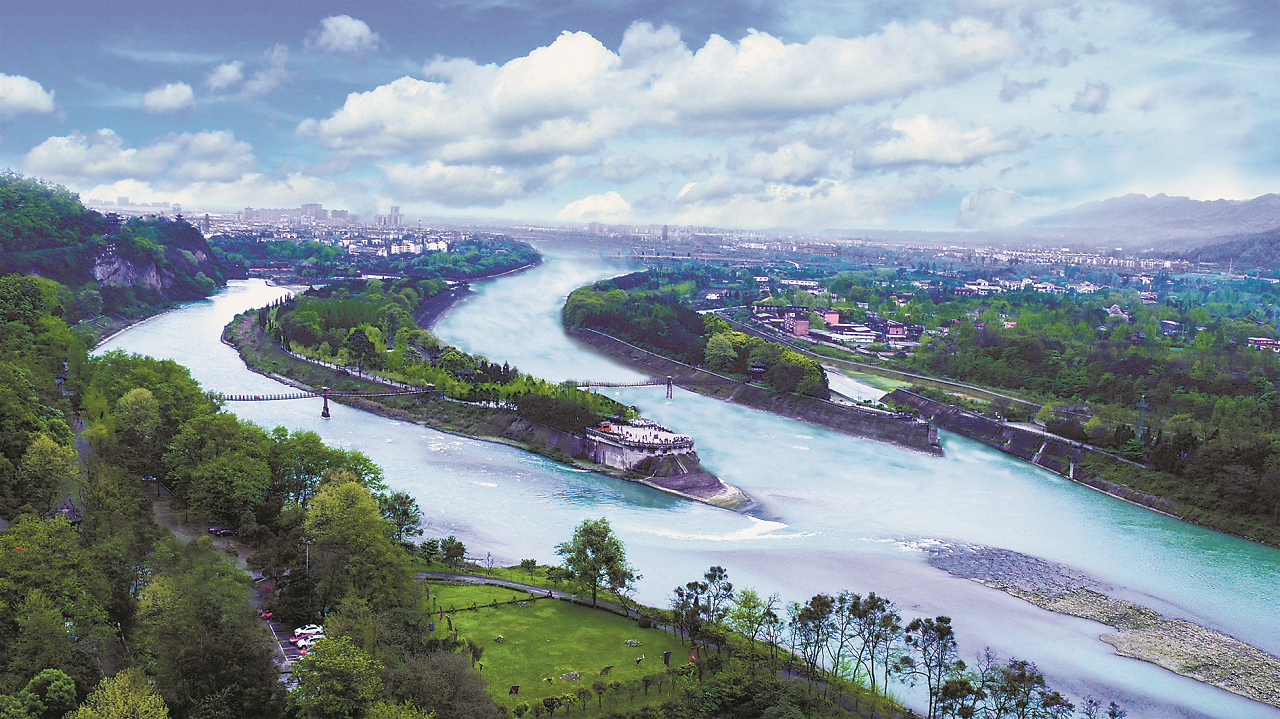

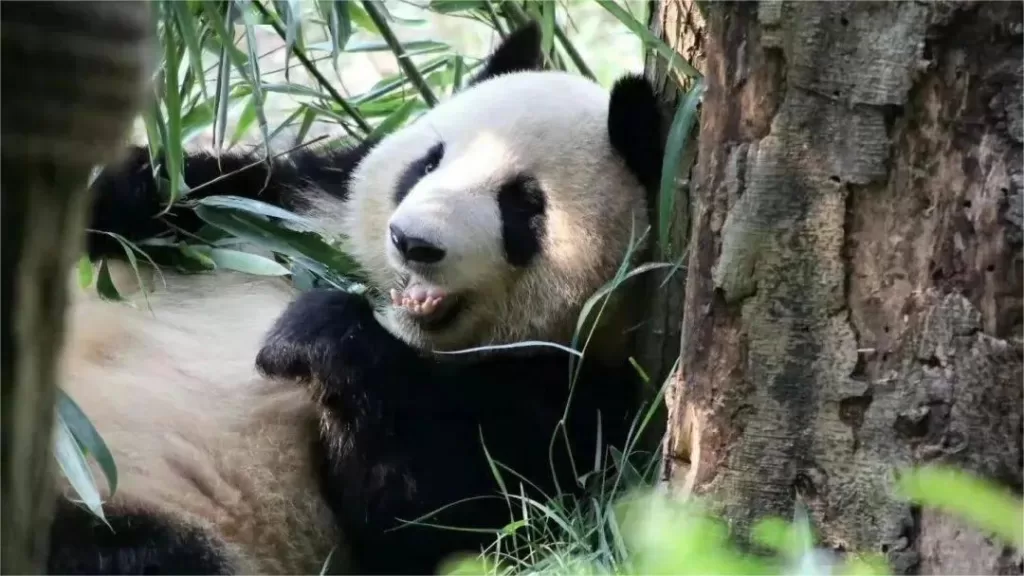
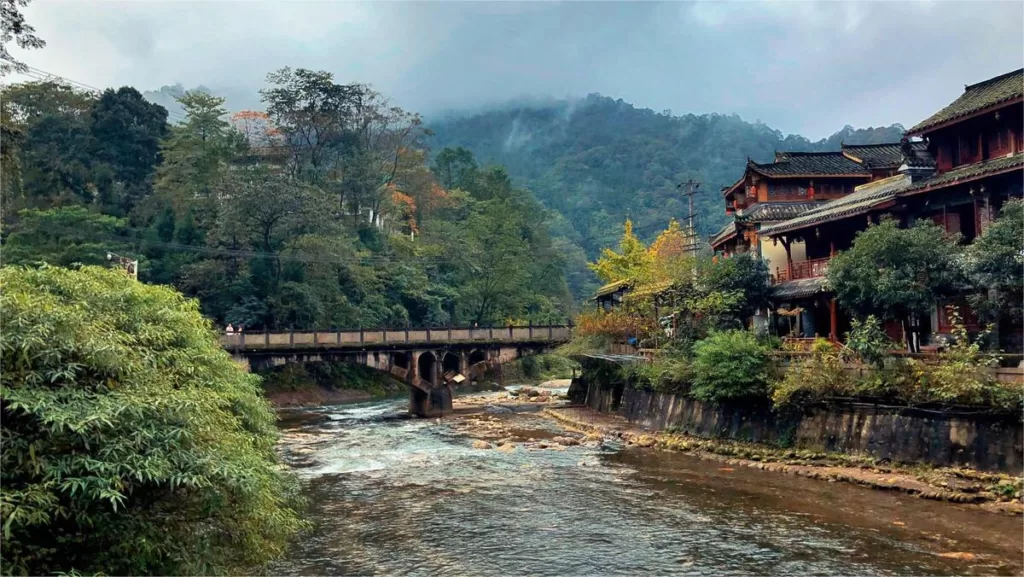

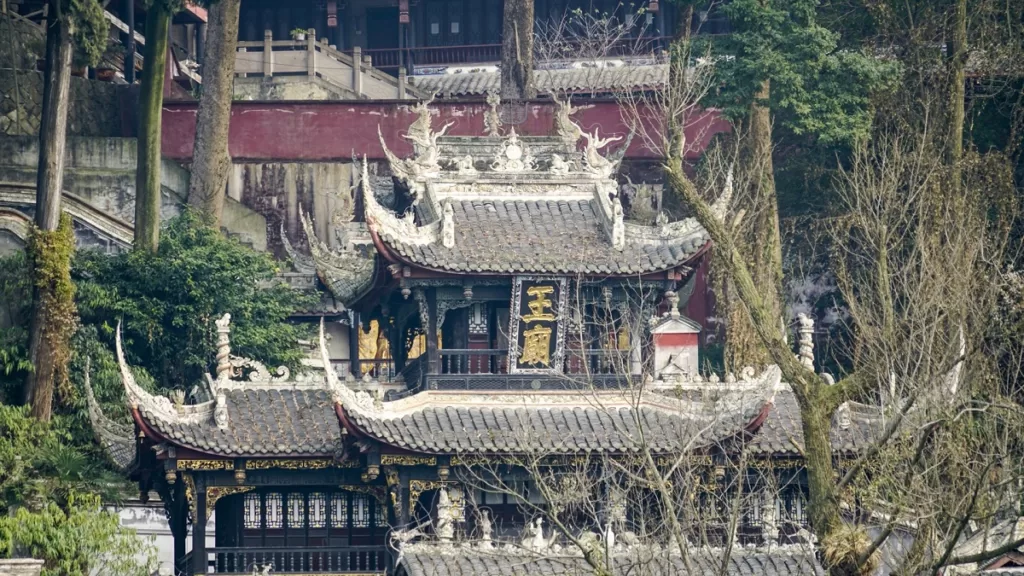

In the past couple of days, the strong winds and temperature drop have caused many cherry blossoms to fall at the Dujiangyan Water Street. If you want to see the cherry blossoms, make sure to take advantage of the last few days of this year’s cherry blossom season – hurry up and go!